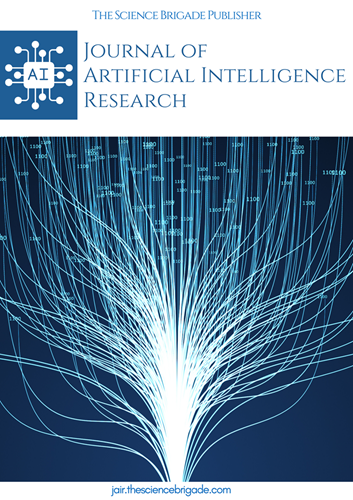A Comprehensive Survey of Deep Learning Architectures: Conducting a Thorough Examination of Various Deep Learning Architectures, Their Applications, and Advancements
Keywords:
Deep learning, neural networks, convolutional neural networks, recurrent neural networks, generative adversarial networks, image recognition, speech recognition, autonomous driving, attention mechanisms, transformer models, self-supervised learningAbstract
Deep learning has emerged as a powerful approach in artificial intelligence, revolutionizing various fields such as computer vision, natural language processing, and robotics. This paper provides a comprehensive survey of deep learning architectures, focusing on their applications and recent advancements. We begin by discussing the fundamentals of deep learning and then delve into various popular architectures, including convolutional neural networks (CNNs), recurrent neural networks (RNNs), and generative adversarial networks (GANs). We also explore their applications across different domains, such as image recognition, speech recognition, and autonomous driving. Furthermore, we discuss recent advancements in deep learning, such as attention mechanisms, transformer models, and self-supervised learning. Finally, we present future directions and challenges in the field of deep learning.
References
Pargaonkar, Shravan. "A Review of Software Quality Models: A Comprehensive Analysis." Journal of Science & Technology 1.1 (2020): 40-53.
Pargaonkar, Shravan. "Bridging the Gap: Methodological Insights from Cognitive Science for Enhanced Requirement Gathering." Journal of Science & Technology 1.1 (2020): 61-66.
Pargaonkar, Shravan. "Future Directions and Concluding Remarks Navigating the Horizon of Software Quality Engineering." Journal of Science & Technology 1.1 (2020): 67-81.
Palle, Ranadeep Reddy, and Haritha Yennapusa. "A hybrid deep learning techniques for DDoS attacks in cloud computing used in defense application."
Pargaonkar, Shravan. "Quality and Metrics in Software Quality Engineering." Journal of Science & Technology 2.1 (2021): 62-69.
Pargaonkar, Shravan. "The Crucial Role of Inspection in Software Quality Assurance." Journal of Science & Technology 2.1 (2021): 70-77.
Pargaonkar, Shravan. "Unveiling the Future: Cybernetic Dynamics in Quality Assurance and Testing for Software Development." Journal of Science & Technology 2.1 (2021): 78-84.
Pargaonkar, Shravan. "Unveiling the Challenges, A Comprehensive Review of Common Hurdles in Maintaining Software Quality." Journal of Science & Technology 2.1 (2021): 85-94.
Downloads
Published
How to Cite
Issue
Section
License

This work is licensed under a Creative Commons Attribution-NonCommercial-ShareAlike 4.0 International License.
License Terms
Ownership and Licensing:
Authors of this research paper submitted to the journal owned and operated by The Science Brigade Group retain the copyright of their work while granting the journal certain rights. Authors maintain ownership of the copyright and have granted the journal a right of first publication. Simultaneously, authors agreed to license their research papers under the Creative Commons Attribution-NonCommercial-ShareAlike 4.0 International (CC BY-NC-SA 4.0) License.
License Permissions:
Under the CC BY-NC-SA 4.0 License, others are permitted to share and adapt the work, as long as proper attribution is given to the authors and acknowledgement is made of the initial publication in the Journal. This license allows for the broad dissemination and utilization of research papers.
Additional Distribution Arrangements:
Authors are free to enter into separate contractual arrangements for the non-exclusive distribution of the journal's published version of the work. This may include posting the work to institutional repositories, publishing it in journals or books, or other forms of dissemination. In such cases, authors are requested to acknowledge the initial publication of the work in this Journal.
Online Posting:
Authors are encouraged to share their work online, including in institutional repositories, disciplinary repositories, or on their personal websites. This permission applies both prior to and during the submission process to the Journal. Online sharing enhances the visibility and accessibility of the research papers.
Responsibility and Liability:
Authors are responsible for ensuring that their research papers do not infringe upon the copyright, privacy, or other rights of any third party. The Science Brigade Publishers disclaim any liability or responsibility for any copyright infringement or violation of third-party rights in the research papers.




